Amy right now is sporting a hand with beautiful sunset shades on it. Yes, she fell on the famously slippery cobblestone sidewalks.
These cobblestones, or calçada à Portuguesa (Portuguese pavement), have long held our fascination. You’ve been treated to pictures. We’ve gushed about them. We even chose one of the designs for our blog logo.
We’re not the only ones who love them. Apparently, these are not confined to Portugal - they’ve made their way to many of the former Portuguese colonies - from Brazil to Angola to to Macao to name but a few. (And beyond as well - one example being the Imagine memorial for John Lennon in New York.) They are, however, most condensed in Lisbon.
First, we need to be clear what we’re talking about. These aren’t Boston’s famous streets. We’ve all seen cobblestones before. There are two kinds: The naturally formed cobble - fun fact - this is a 2.5 to 10” stone. (We always thought they were bigger.) They’re usually in the street. Or it’s a sett, a formed stone. They’re either rectangular or square. Almost like bricks, but stone instead of clay. Historic districts of many cities will have a small section that leaves them be and doesn’t pave them over with asphalt.
Hang with us as we go into the weeds here - the cobblestones that make up Portuguese pavement are better described as a type of sett than a cobblestone. They are a roughly cubed natural stone. Much rougher than a classic sett, but still not left to hang foot loose and fancy free - au natural if you will - like a cobble. They are limestone or granite typically and are placed in a mosaic, bonded by either sand or occasionally something like concrete. Large containers of stone are delivered to the work site, as are immense amounts of sand. The calceteiros prepare the sand bed that will lay beneath the sidewalk, then shape the stones to fit. The idea is that they are all supposed to be about 2” x 2” and fit into a diamond pattern. That locks them in. In reality, patterns wiggle as stones require. Lisbon has miles and miles of these sidewalks. Generally they are plain - all one type of stone. Sometimes you will find a fancy design in a sidewalk, usually alternating white and black. The best sidewalk, for walking purposes, is the mixed white and grey. The white is limestone and gets so slippery.
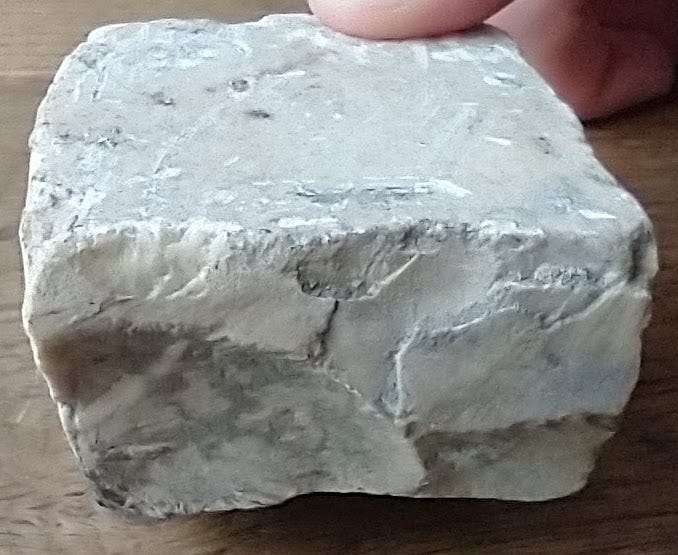
We have a rhino to thank for this art, or so the story goes. The Caesar of the East, the Lion of the Seas or Portuguese Mars, take your pick, Afonso de Albuquerque, an important late 15th-century Portuguese general, admiral, and statesman, brought this tremendously unusual (for the time) animal to his king, Manuel I. We will just trust that he knew his king well. And indeed it seems that he did for King Manuel was tickled pink and named the animal Ganga. Ganga, that lucky rhino, was allowed to join in the King’s annual birthday parade. We can all imagine Ganga’s excitement as this date rolled around!
The only problem with this plan was that capital cities of the time were not known for having the cleanest of streets. King Manuel understandably wanted to show his beloved Ganga off in the best possible manner, concerns brewed unchecked that poor Ganga, through no fault of his own, might become sullied during the affair with the muck of the hoi polloi. And thus he called upon the ancient Roman artistry of mosaics that had formerly been present in the region, mixed it with a smidgen of the Moorish influence that had also graced the city, and had the first limestone Portuguese pavement built. All so poor Ganga would not get dirt upon his legs. That’s one loved rhino.
The pavement was a hit and people promptly started building their own Ganga walkways (admittedly, wild conjecture on our part, but c’mon, can’t you just see it?). Sadly, nature decide to shake things up a bit with the (cue ominous music here) 1755 earthquake. (Yes, we live on the Lower Tagus Valley fault line. We promise to go into more depth on this at some later date.)
When a city is leveled, the first priority is not in rebuilding grand sidewalks. It took some time for them to get back into things. 1842, apparently!
Our first week here we were held spellbound, watching a master artisan repair a long section of sidewalk. There had been some building construction that affected the sidewalk. Rather than destroy a concrete sidewalk and send it all to the dump, he had a bag of cobblestones, and a mass of sand. He would even out the sand where he was working and tamp it down. Then he would take a cobblestone and with a tool he would whack it off a bit to get the shape he wanted. The he used the other side of the tool to create the right shape in the sand for the stone. And so on. At the end, sand went between all the cobblestones. It was astonishing how fast he moved.
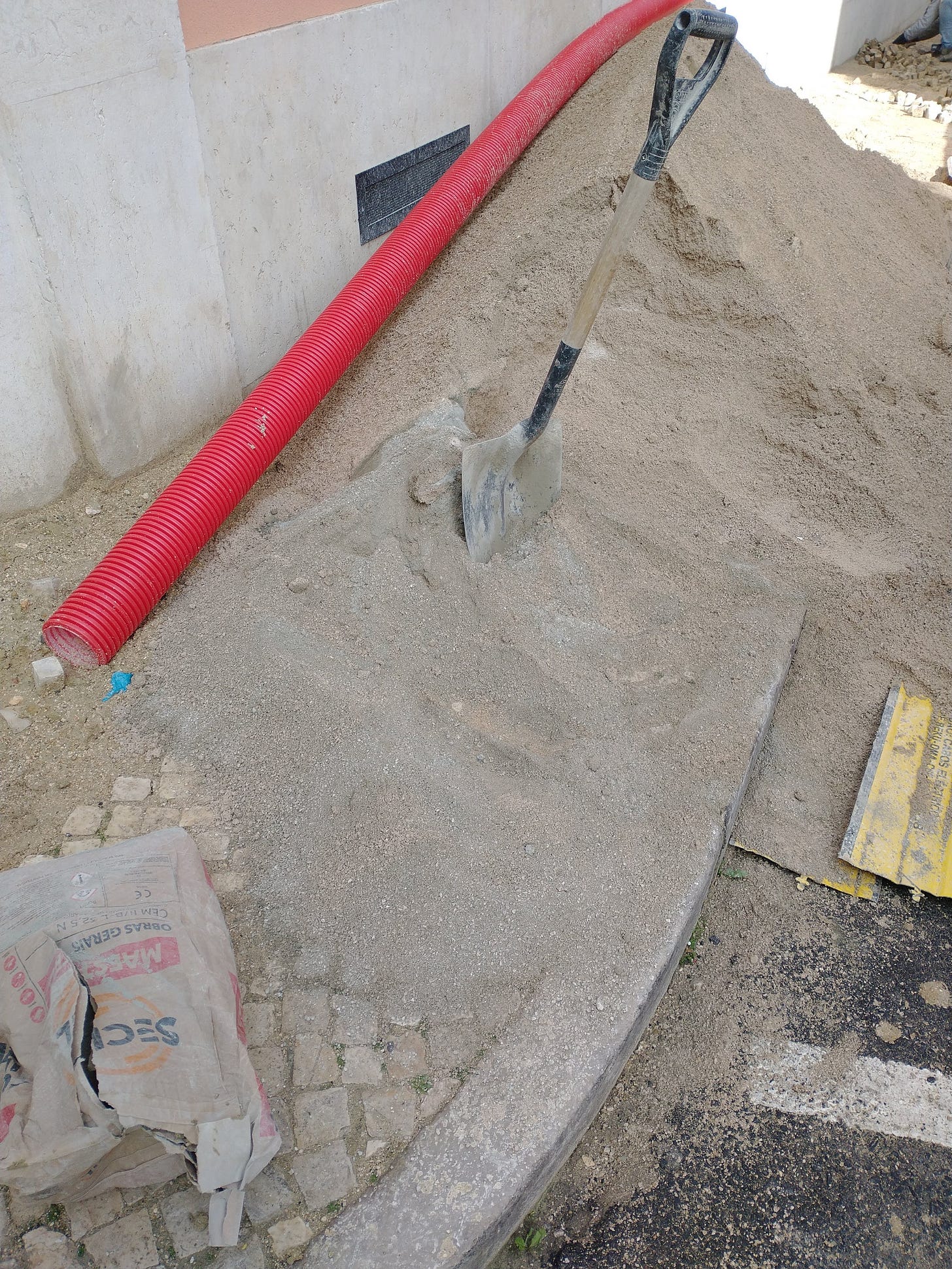
So why are they so slippery? Evidently if you want to polish stone, all you have to do is have feet tread on it. For centuries. You can literally see the shine. Add a smidge of rain, and presto - you’ve got the slip & slide! Which is why they are so very controversial. So many love them. They define Lisbon and many parts of Portugal. And yet, they are so hazardous, especially to the elderly. The Great Cobblestone Debate, pitting the safety first and lets spend less money! folks on one side up against the but they are so beautiful and define us and a part of our artistic heritage folks on the other.
How is this tug of war going? Well, a school for the continuation of education of calceteiros has been formed. And, some sidewalks are being redone so that down the middle is a strip of concrete with cobblestone on the sides. It’s definitely an attempt that can’t please everyone, but it sure is ugly. On the other hand, anything that helps keep Amy fully functioning is a plus in our book.
That’s all for now.
Love from Lisbon,
Amy & Scott





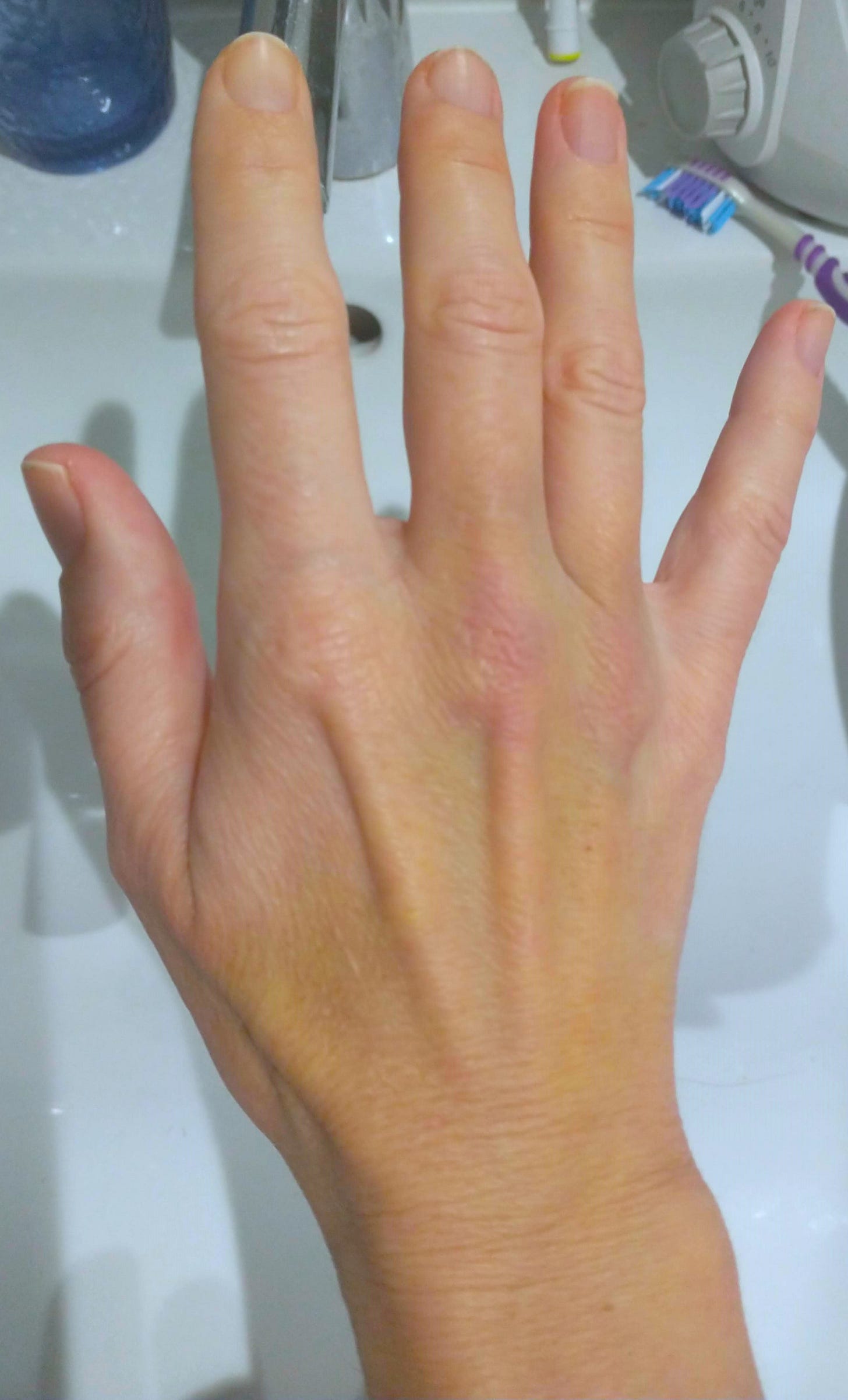
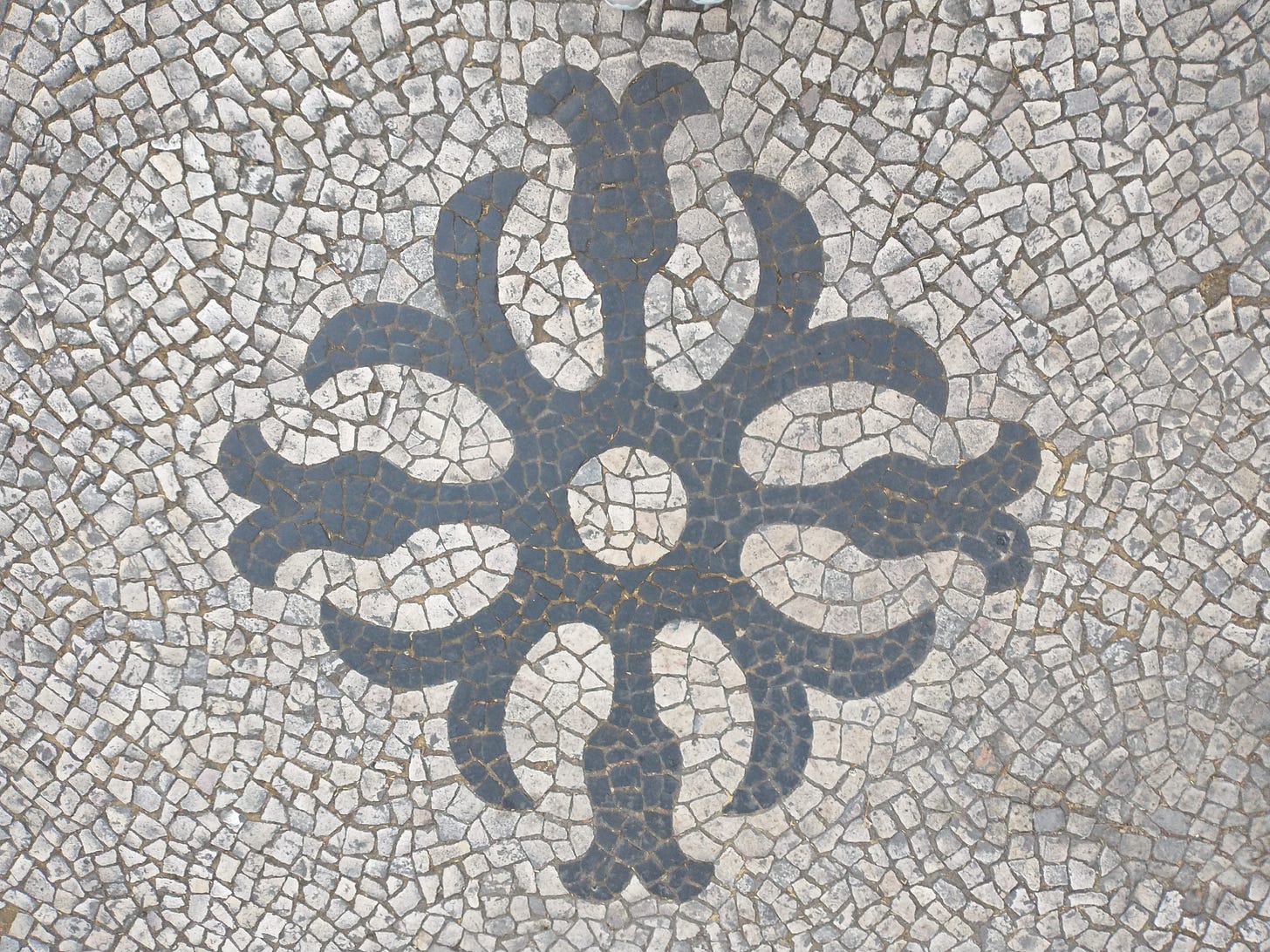

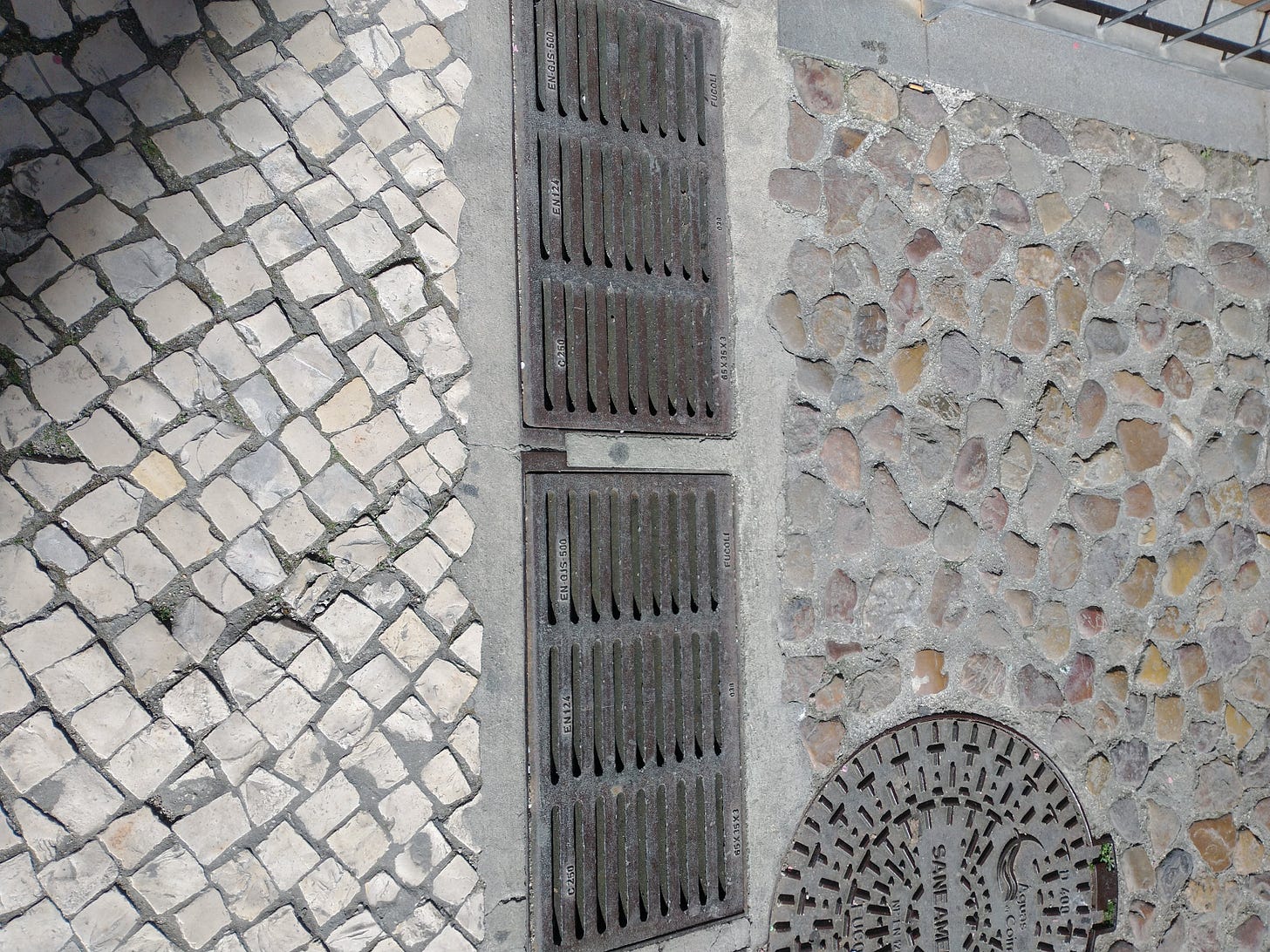
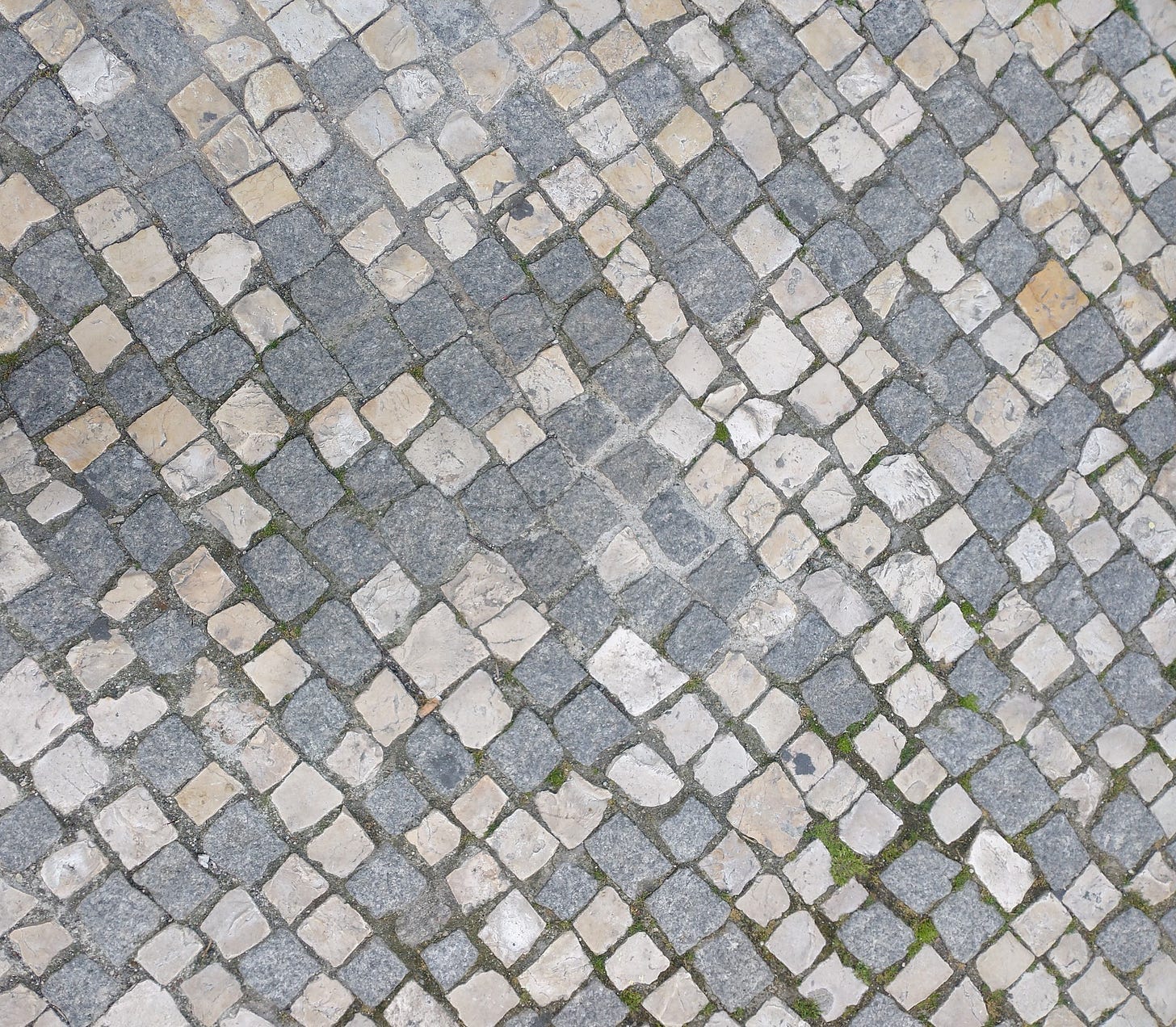
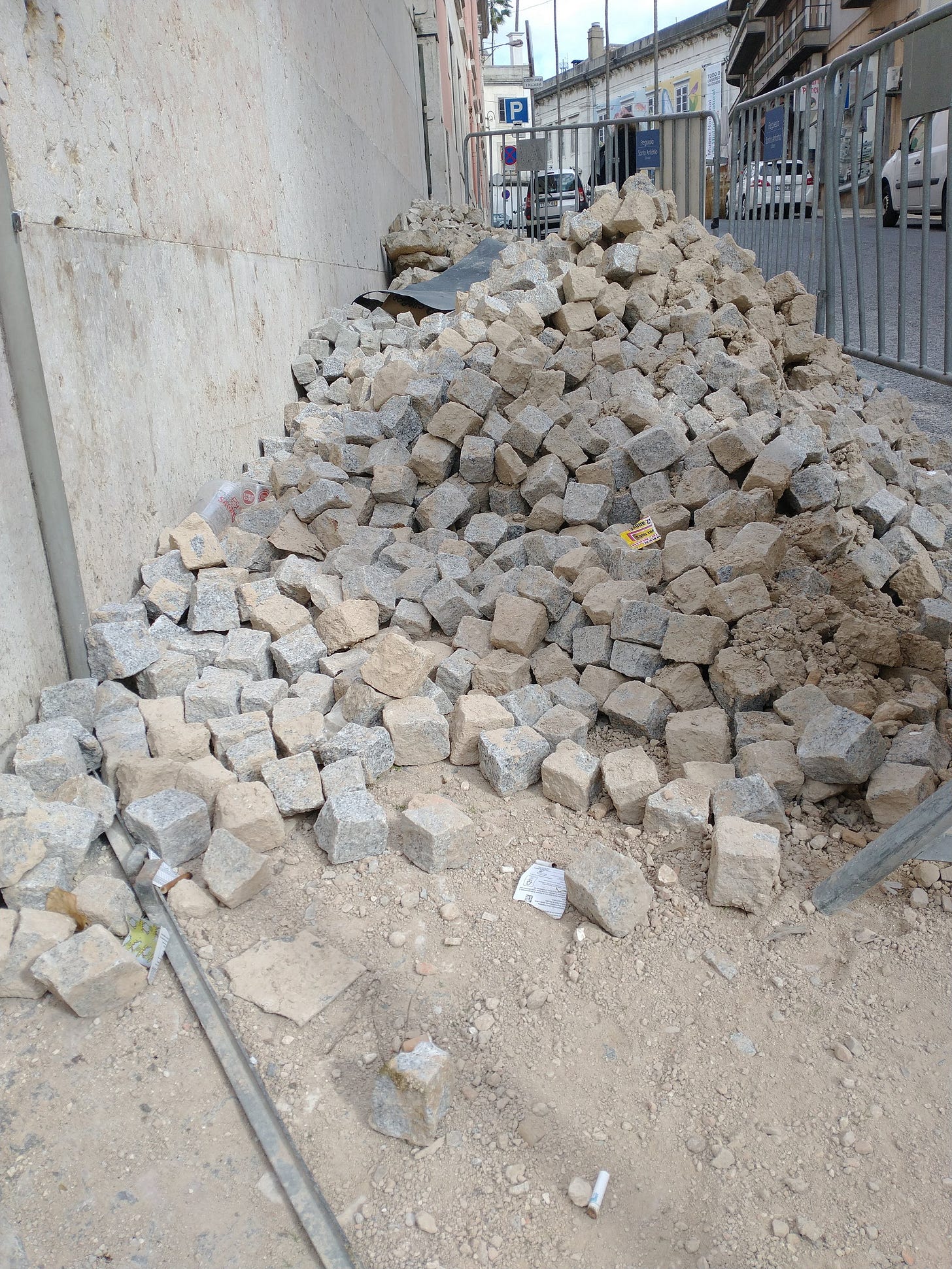
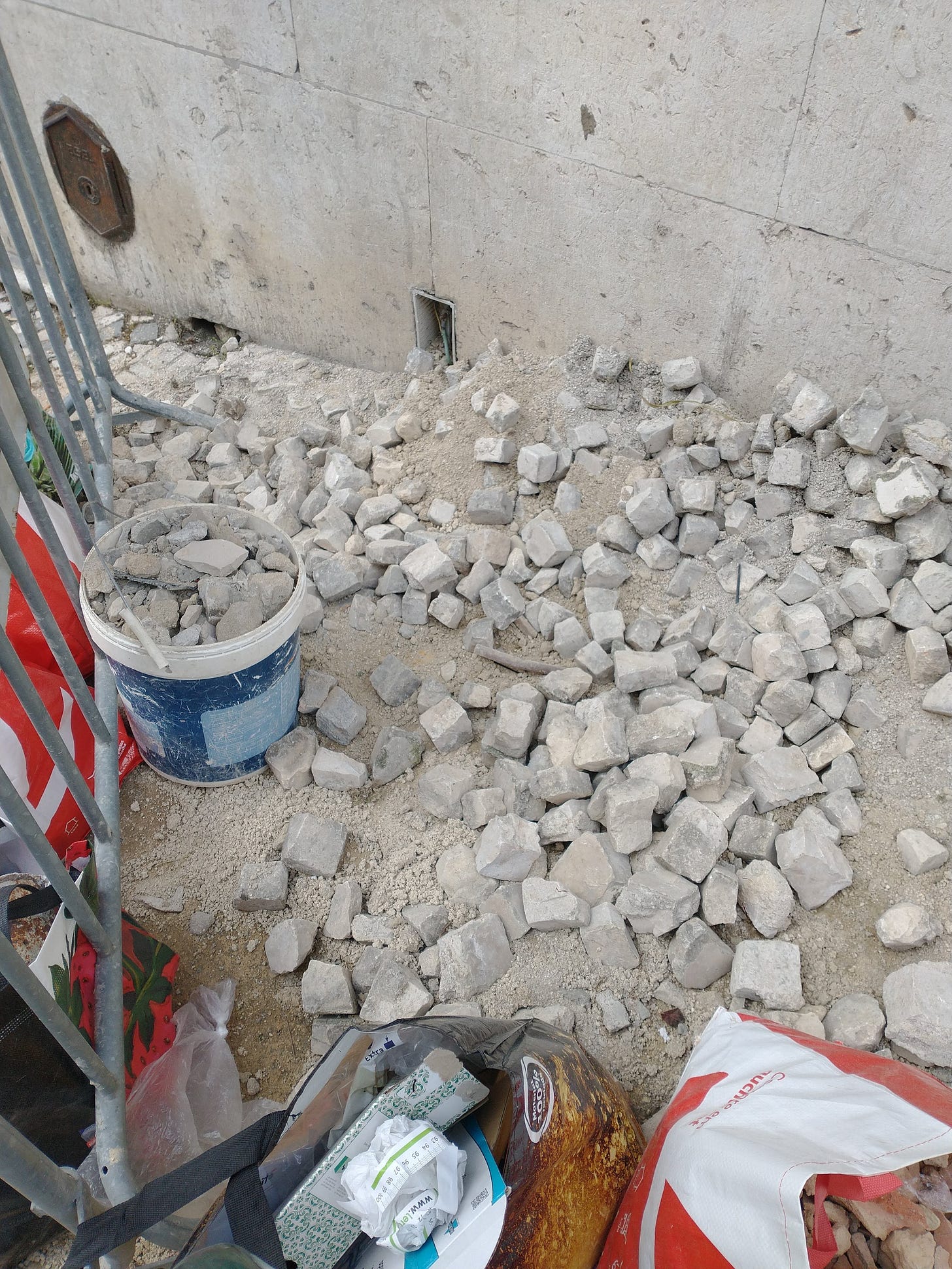
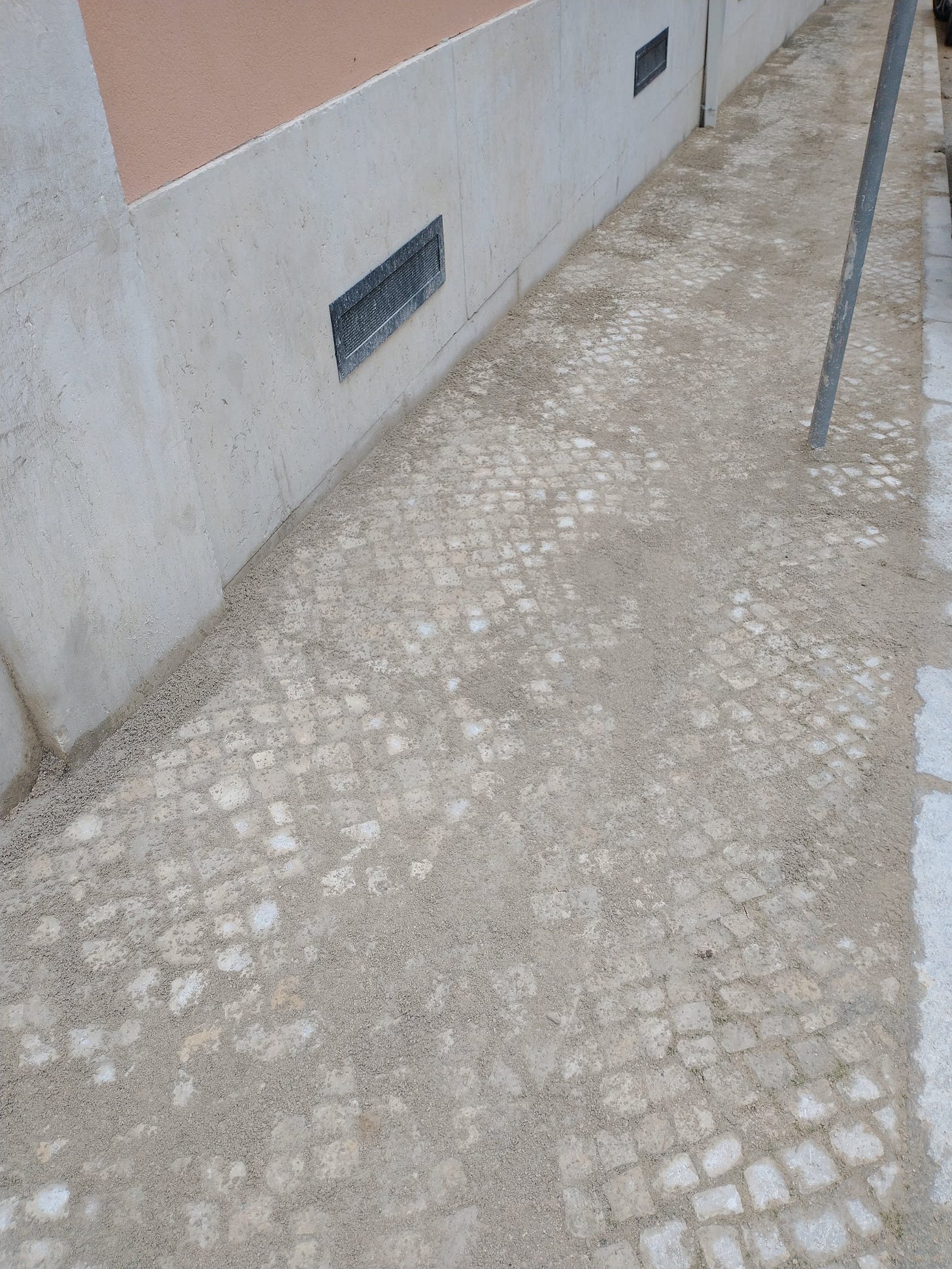
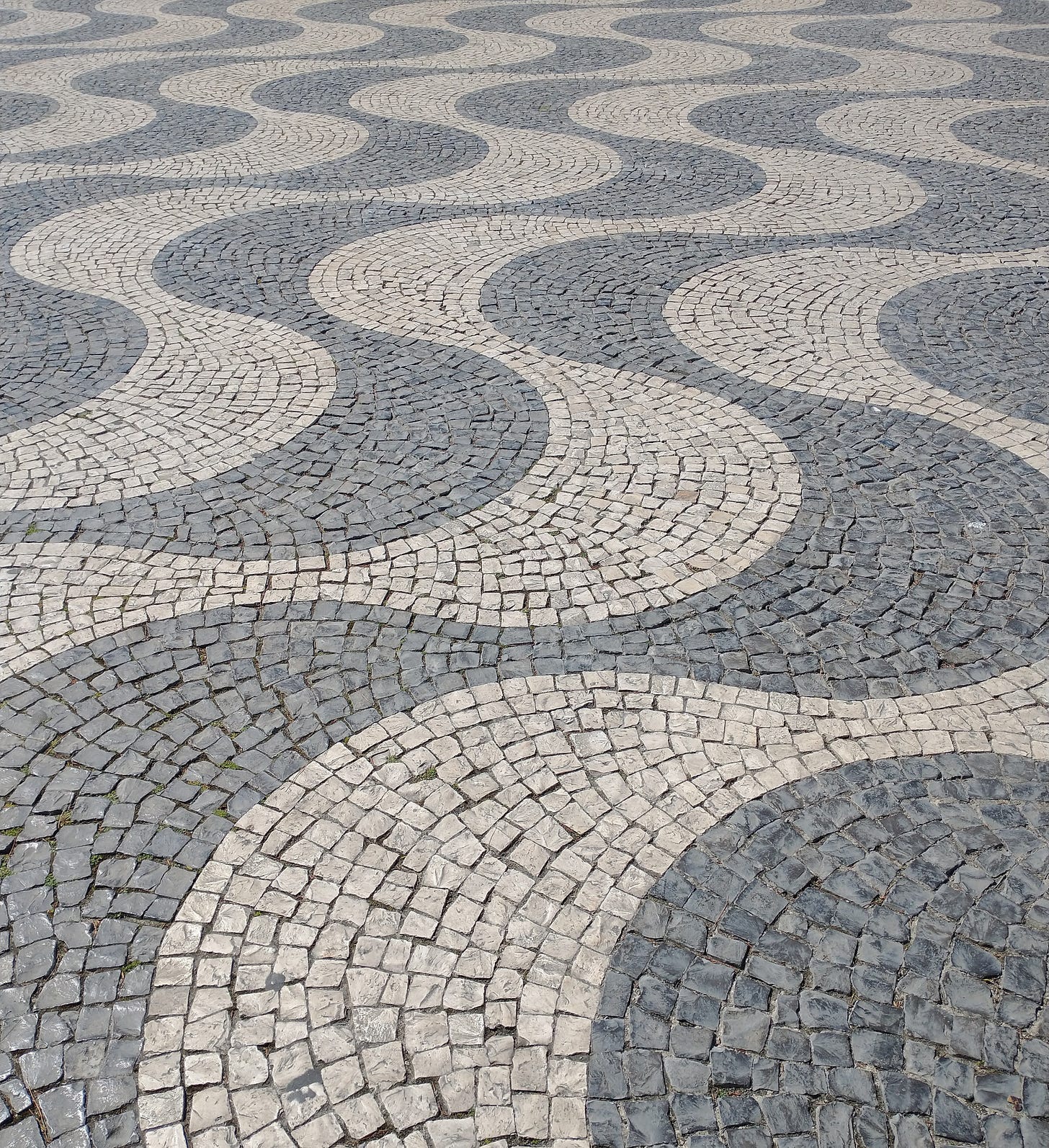
So interesting! Thanks for sharing this fascinating story. Walking on these streets can definitely be scary, but so much to see and explore!
Enjoyed my time in “the weeds”. Thanks for the education.